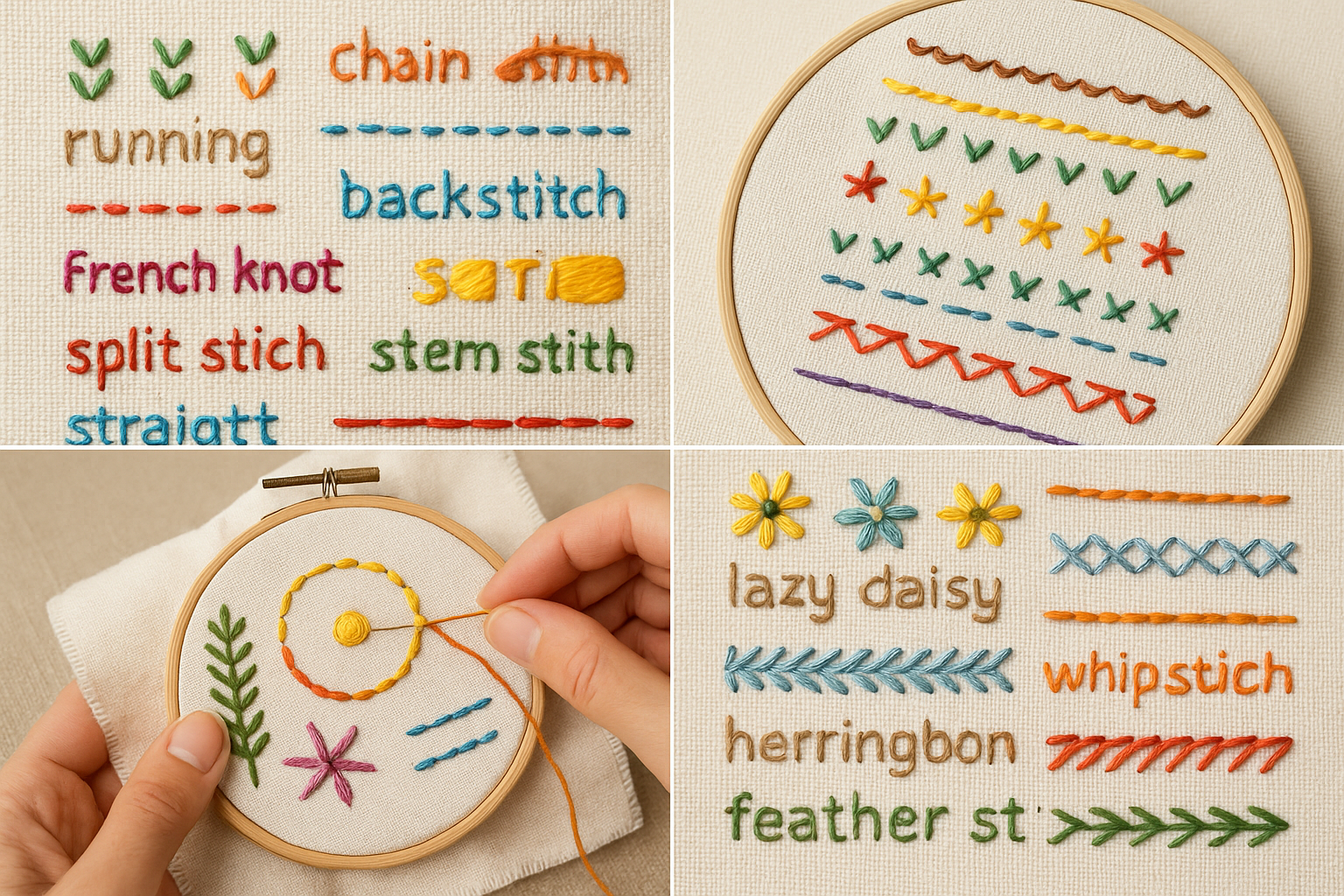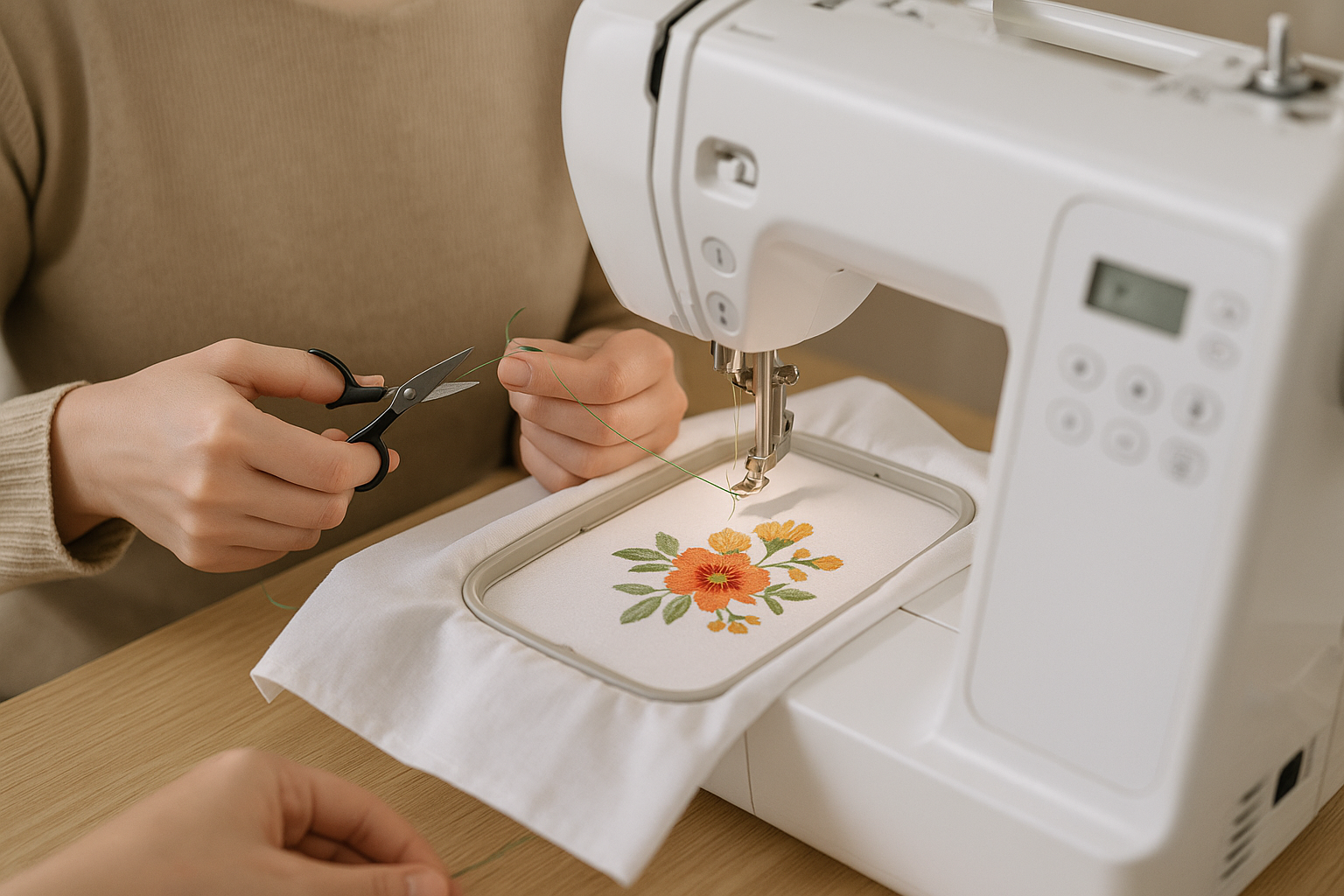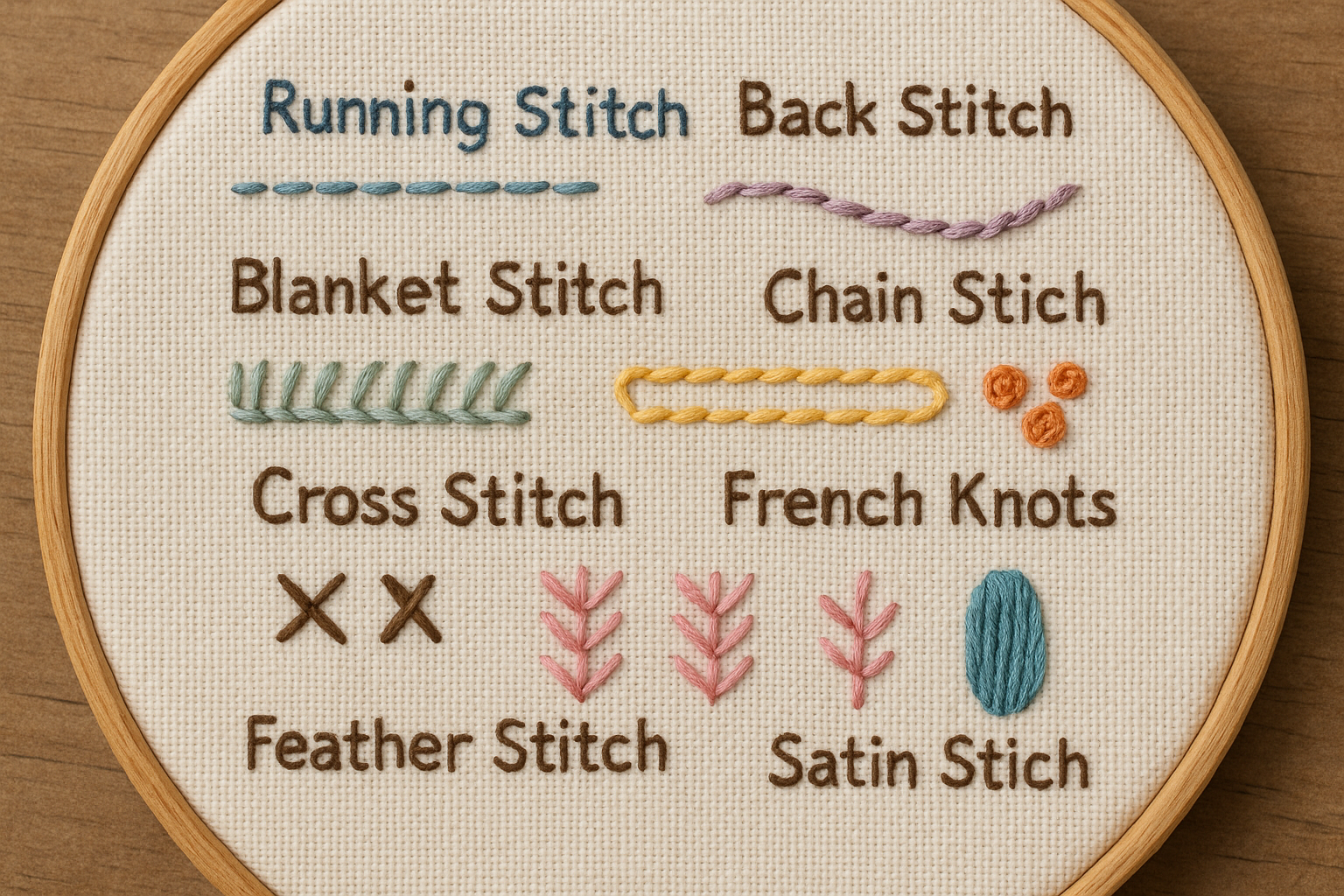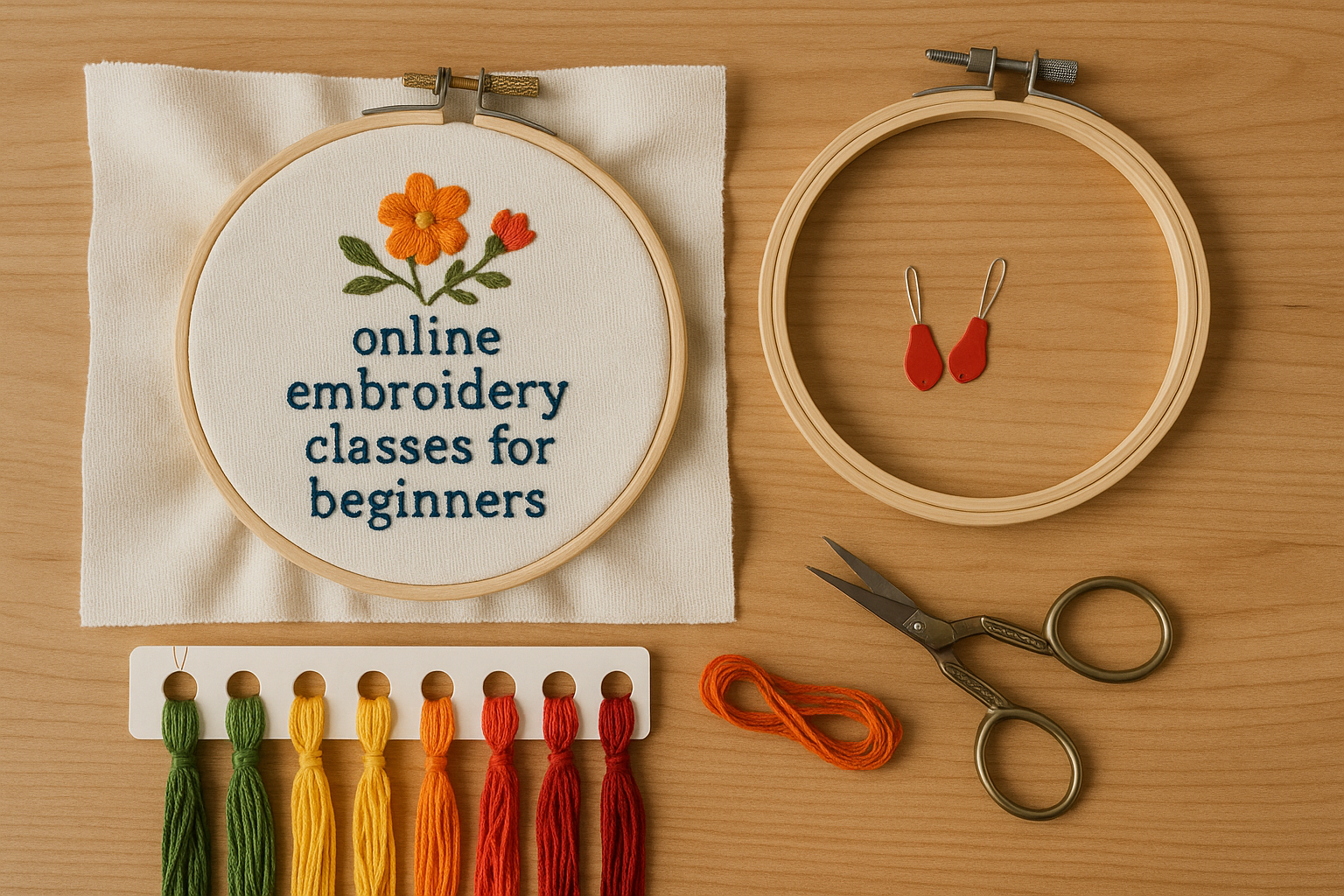Online embroidery classes for beginners are booming, offering more creative freedom than ever before.
But what are they, exactly?
This guide is your complete cheatsheet to choosing, starting, and thriving in online embroidery classes for beginners.
Some are packed with comprehensive stitch tutorials and fun projects.
Some focus on machine embroidery essentials and equipment advice.
Some teach you advanced color blending and shading techniques early on.
Some provide step-by-step walkthroughs of real embroidery art pieces.
Some mix traditional hand embroidery with digital design innovation.
Let’s dive right in.
Why Choose Online Embroidery Classes for Beginners?
Online embroidery classes open doors to learning this intricate craft at your own pace. Whether you want to explore hand embroidery’s timeless beauty or plunge into the precision of machine embroidery, these classes provide flexibility and expert guidance without leaving your home.
With technology improving every year, many courses now offer detailed video demos, interactive Q&A sessions, and downloadable resources.
One of the biggest advantages is the diversity of styles available. You can start with foundational stitches or focus on specific techniques like thread painting or photographic embroidery. Plus, many classes cater to different budgets—from free tutorials to premium courses packed with extras.
These lessons allow you to build confidence step-by-step while creating meaningful projects that keep you motivated.
According to embroidery educator Amanda of Crewel Ghoul, online classes help beginners master over 20 essential stitches and beyond, making the journey creative and rewarding.
Beyond skill-building, online formats foster community; forums and social groups let you share progress and get feedback.
Ready to stitch into the future? Let’s explore the best classes, essential tools, and everything you need to start strong.
Top Hand Embroidery Classes for Beginners
Choosing the right class can feel overwhelming. Here’s a curated list of standout hand embroidery options that promise to elevate beginners into confident stitchers.
1. Ginny Nunez’s Beginner Sampler on Skillshare
This class teaches more than 20 stitches in a fresh, fun style focusing on a sampler project. It’s ideal for those who want clear, project-based learning. Skillshare offers flexibility with free trials, making it accessible to many.
2. Lauren’s Marbled Embroidery Project
Perfect if you want to dive into color blending and detailed work early on. Lauren’s class teaches you to create vibrant designs with artistic flair.
3. 31-Day Stitch Sampler Course
Learn one new stitch a day with this systematic approach. It’s great for maintaining habit-building and gaining a broad stitch repertoire quickly.
4. Crewel Ghoul’s Stitching With Confidence
A self-paced, in-depth course perfect for leveling up once you know the basics. It covers design concepts alongside advanced stitching, helping you create embroidery art beyond simple patterns.
5. Emillie Ferris’s Thread Painting Butterfly
Explore realistic embroidery art with this class focused on thread painting techniques. A great option if you want to develop texture and dimension early in your journey.
6. Peggy Dean’s Creative Photograph Embroidery
This unique class guides you through integrating photographs with stitching, expanding creative possibilities.
7. Amanda’s Free Watercolor and Embroidery Mountain Sunset Class
Great for beginner-friendly fusion projects combining watercolor painting with embroidery, available for free on her website.
These classes help you discover styles and techniques tailored to your interests — from basics to artistic exploration.
Pro tip: Start with a class that emphasizes stitch fundamentals and project-based learning to stay motivated while acquiring essential skills.
Source: Crewel Ghoul

Essential Machine Embroidery Gear Explained
The world of machine embroidery is equally exciting, and if you’re leaning towards combining tech with textile art, knowing your gear is crucial.
The embroidery machine is your main investment. For beginners, models like the Brother SE600 provide a great start, teaching you vital skills like tension control and fabric hooping without overwhelming features.
Hoop size is vital: a 4×4-inch hoop might limit your designs, while a 5×7-inch hoop opens more creative space, ideal for bigger projects. Experts advise upgrading hoops if budget permits to avoid splitting designs later (source: YouTube machine embroidery tutorial).
Stabilizers
These support your fabric during stitching. Common types include:
- Cutaway stabilizers – for stretchy fabrics like t-shirts, providing long-lasting support.
- No-show mesh stabilizers – a lighter, shadow-free option preserving fabric look, highly recommended.
- Tear-away stabilizers – perfect for sturdy fabrics like denim or canvas, easily removable after stitching.
- Wash-away topper stabilizers – excellent for towels or plush fabrics to prevent thread sinking.
Threads and Needles
Polyester threads in 40 weight cover most embroidery needs, while high-quality brands like Madeira provide durability and vibrant colors. Beginners might start with starter packs for experimentation.
Needle size 75/11 is broadly used, but ensure compatibility with your machine model.
Accessories
Scissors with curved tips help remove excess fabric without damage. Tweezers are vital for thread cleanup. Bobbin management can be simplified using pre-wound bobbins specific to your machine model.
Starting with the right gear means fewer frustrations and more fun.
Curious about mastering the blend of technology and traditional craft? Discover more in Mastering Smarts and Crafts: The Ultimate Guide to Blending Tradition with Technology.

Must-Know Stitches Every New Embroiderer Should Master
Whether hand or machine embroidery, learning the essential stitches unlocks creativity. Here’s a breakdown with simple explanations and tips.
Back Stitch
A strong, linear stitch perfect for outlines and text. It’s done by stitching backward to the last hole, creating a continuous line. Use short stitches on curves.
Split Stitch
Creates a braided line effect by splitting thread strands in each stitch. Use closely spaced stitches for a tight look.
Stem Stitch
Ideal for stems and curved lines. The needle doesn’t pull completely through every time, giving a raised effect that follows lines gracefully.
Satin Stitch
A fill stitch built by laying thread side-by-side for solid shapes, like leaves or hearts. Keep stitches close but not so tight they cause puckering.
French Knots
Creates tiny raised dots by looping thread around the needle twice before pulling it through. Great for flower centers or decorative accents.
Lazy Daisy
Formed by looping thread to create petal shapes secured with tiny stitches. Don’t pull loops too tight or petals lose shape.
Fishbone Stitch
Excellent for filling leaf shapes with a textured, almost 3D effect. Overlapping angled stitches create a woven appearance.
Learning these basics helps build confidence. Try stitching a sampler using these to test thread types and needle sizes.

How to Choose the Best Online Embroidery Class for You
With so many classes available, selecting the right one is key to motivation and success. Here’s a practical checklist:
- Skill level compatibility: Is it designed specifically for beginners? Does it start with fundamentals or jump into complex projects?
- Project relevance: Do you want to focus on hand embroidery, machine, or a mix? Choose a class that matches your interest.
- Teaching style: Look for video lessons with clear, concise instructions sprinkled with visual demos. Classes from experienced artists often add valuable tips.
- Community and support: Interactive forums, feedback channels, or live Q&As can dramatically raise your learning curve.
- Budget and access: Some platforms like Skillshare offer free trials, while others may require upfront fees. Pick what matches your commitment level.
Don’t hesitate to preview sample lessons or seek reviews from other beginners online, such as those shared on the embroidery Reddit community.
Reddit insights
Above all, choose a class that excites you to keep stitching regularly.
Common Beginner Mistakes and How to Avoid Them
Even the best beginners face challenges. Here’s how to steer clear of pitfalls and stitch confidently.
- Using incorrect needles or thread: For hand embroidery, use embroidery floss and needles sized 7 to 10. For machines, ensure you have the right needle size (typically 75/11) and thread weight (usually 40-weight polyester).
- Not hooping fabric securely: Loose fabric causes puckering and uneven stitches—always aim for a ‘drum-tight’ fabric tautness.
- Skipping stabilizers: Neglecting stabilizers can lead to fabric distortion, especially with stretchy or delicate material.
- Ignoring stitch tension settings (machine embroidery): Misadjusted tension can cause thread breaks or loose stitches. Spend time mastering this early.
- Going too fast: Take your time to make consistent stitches; speed comes with experience.
- Not practicing basic stitches enough: Repetition builds muscle memory; start with stitch samplers before complex designs.
Remember, every imperfect stitch is a learning opportunity leading toward mastery.
Tip: Keep a stitching journal to track progress, note challenges, and celebrate breakthroughs. It’s a creative motivator!
Creative Project Ideas to Practice Your Skills
Practical projects reinforce learning and make the craft fun. Here are some beginner-friendly ideas that challenge your new skills while enabling creativity.
Floral Sampler
Create a small hoop featuring one flower per stitch type. This builds familiarity with stitch textures and shapes.
Personalized Patches
Design simple monograms or icons to apply on clothes, bags, or hats—combining creativity with practical use.
Greeting Cards
Lightweight fabrics stitched onto card stock make charming personalized stationery.
Embroidered Photographs
Experiment with thread painting on printed photos for a mixed-media art piece. Peggy Dean’s class is an inspiring resource for this unique craft (source).
Textured Wall Art
Play with layering stitches and integrating colorful floss for abstract embroidery artworks.

Building your stitch portfolio will help identify preferred styles and techniques over time.
Frequently Asked Questions About Online Embroidery Classes
Do I need prior experience to join online embroidery classes for beginners?
No. These classes are designed assuming little or no previous skills. They start with basics and gradually increase complexity.
Can I learn embroidery without buying expensive equipment?
Absolutely. Many hand embroidery classes require just needles, floss, fabric, and hoops. For machine embroidery, starter machines can be affordable and reliable.
How long does it take to complete a beginner online embroidery class?
Classes vary from a few hours to several weeks, depending on depth. Self-paced courses let you move as fast or slow as needed.
Are these classes suitable for kids?
Some are. Always check the class description. Hand embroidery classes with simple stitches are commonly kid-friendly.
Where can I find embroidery patterns to practice?
Many teachers provide free downloadable patterns. Etsy shops and online forums also offer beginner-friendly patterns.
What’s Your Next Step?
Tell us in the comments: How will you apply this to your online embroidery classes for beginners journey? For personalized advice, check out our resource on mastering arts and crafts to boost your creative skills!
Leave a Reply